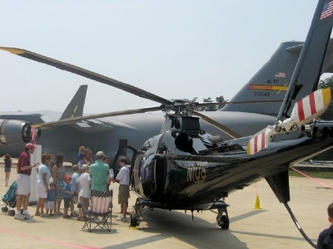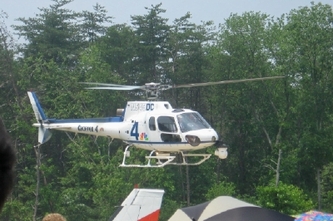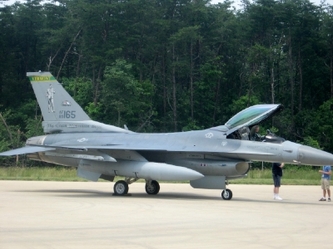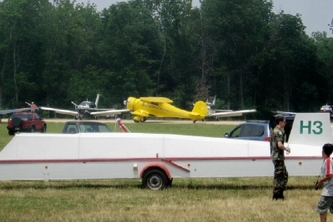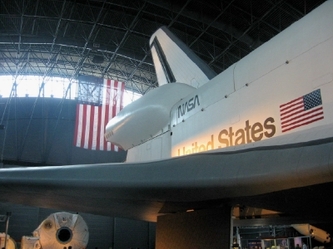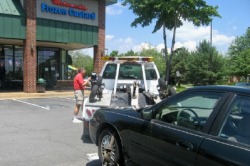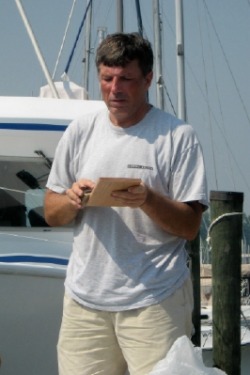
Hampton continues to be our base, as we make some road trips from here to other spots in Virginia. The rest of the time, we’re working on Orion, exploring Hampton and volunteering at the local American Red Cross. We are keeping our instructor certificates in force and filling in for some classes that needed instructors at the Hampton office. After teaching our first CPR class, we were returning home very late, only to find a nearby building on fire. Luckily no one was inside, or we might have been doing more than teaching first aid.
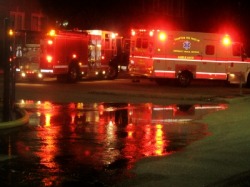
We have to pass the historic Phoenix Hall at Hampton University to get to our marina. Now used as a classroom building, we were shocked to see flames shooting from the roof as we passed late one night on our way back to the boat. A dozen emergency vehicles responded to save the building. We learned the next morning that it sustained about $500,000 worth of damage before it was brought under control.
Wax on – Wax off
With much of the woodwork on Orion looking so shiny from the recent coats of Cetol, the rest of the deck began to suffer by comparison. Therefore, Cathy turned her attention to a much needed waxing of the upper deck and cockpit. This helped removed any dirt and residue from the painting tape as well as the usual scuff marks that come from living and sailing aboard all year.. The effort was worth it, since it helped bring out the shine in the gelcoat and, going forward, will protect it from the sun and saltwater exposure.
Let’s Get Physical
With the unseasonal spike in the temperatures and humidity over several days in early June, Cathy had to limit the work on the deck to early mornings and evenings to avoid the heat of the day. Since we were both looking to put our best foot forward for our annual physical, it didn’t look like we were going to be able to get enough exercise just doing boat projects or walking. It was too darn hot.
We found another way to get in shape at the local Hampton Community Center. For just $10 each, we could get an annual pass that gave us access to their facility, which included a pool. This way, we could swim laps for exercise, without worrying so much about heat effects. We seemed to have done pretty good staying in shape this year, since we were both able to swim at least a mile our first day in the pool. Maybe the physicals would go OK after all.
Tuning Our Instruments
While in Marathon, we discovered that our anemometer (i.e., the thing that measures wind speed and direction at the top of the mast) was bent at an interesting angle, maybe 45 degrees off the centerline. This was causing mistakes in our true and apparent wind readings on our instrument at the helm. Raymarine suggested we try to re-calibrate it, which we had done successfully 3 years ago, just after purchasing Orion. So, we headed out one calm morning into the Hampton River to try this.
Before adjusting the wind instrument, we decided to first re-calibrate the speedometer. We had been suspicious for a long time that this was overstating our boat speed – maybe by as much as a knot and a half. Since we rely on our GPS speed most of the time, this wasn’t too much of a problem, but the speedometer is used by the instruments to calculate true wind speed from apparent. If the boat speed was off, then the true wind speed could be off as well. Also, the difference between the GPS speed (i.e. speed over ground) and boat speed (speed in the water, as measured by an instrument spinning in the water under the boat), should give an estimate of the current we are running in. It would be nice to have a more accurate estimate of that as well.
So, we started our calibration run, which required us to travel a pre-measured distance out and back, while programming the start and finish into the speedometer while it is in calibration mode. We used our GPS to measure the distance and establish the track to follow back. Then we retraced our route back to the beginning. The speedometer appeared to be more accurate after we finished, since it read a speed lower than the GPS, which had almost never happened before, but only time will tell for sure.
Now, it was time to calibrate the anemometer. This was supposed to be simple. We turned the boat through two complete circles with the instruments in calibration mode. If successful, the instrument should beep twice after the 2nd rotation. We spun around once, twice, three times for good measure, but nothing happened. Just to be sure we didn’t do it wrong; we spun the opposite direction three times. Again, nothing. It was beginning to look like we needed to do something more serious to correct this problem.
In the meantime, we’ll have to continue to account for the error when we go for a sail.
What’s that noise?
We read once that you should never let a noise or a smell on a boat go uninvestigated. If it’s at all out of the ordinary, it probably means something is going on that you want to know about. We had let one sound go long enough that we were lulled into thinking it was usual, so we hadn’t gone to investigate.
Over the course of the past year, we would occasionally hear our water pump run for a second when no water was being used. This was curious, but we suspected it was just to re-pressurize the system when it hadn’t been used for a while. This theory quickly unraveled as Cathy was working on the boat one day last week.
The pump was starting to sound more often, only a few minutes apart. Initially involved in other tasks and hoping Dave would arrive back soon, she simply turned the water pump breaker off, along with the hot water heater. That stopped the noise. However, she eventually needed water to wash her hands, and the water pump seemed to be re-pressurizing even more frequently. It seemed the leak was getting worse. She realized she couldn’t put this off any longer.
The last time we had a leak, we discovered its source was the hot water heater’s outgoing fresh hot water hose. Since the water pump was in the same compartment as the hot water heater, her hopes were that the problem was somewhere in there. This compartment drains directly into the bilge and would make the least mess, which might explain why we had never found the problem before. After a few false starts, Cathy found the leak this time in the fresh water hose leading into the hot water heater, less than an inch away from the nipple. She was attempting to tape it as a temporary fix, when Dave arrived back. He proceeded to remove the hose, cut of the part with the hole and reattach it.
Voila. No more leak. No more errant water pump sounds.
With much of the woodwork on Orion looking so shiny from the recent coats of Cetol, the rest of the deck began to suffer by comparison. Therefore, Cathy turned her attention to a much needed waxing of the upper deck and cockpit. This helped removed any dirt and residue from the painting tape as well as the usual scuff marks that come from living and sailing aboard all year.. The effort was worth it, since it helped bring out the shine in the gelcoat and, going forward, will protect it from the sun and saltwater exposure.
Let’s Get Physical
With the unseasonal spike in the temperatures and humidity over several days in early June, Cathy had to limit the work on the deck to early mornings and evenings to avoid the heat of the day. Since we were both looking to put our best foot forward for our annual physical, it didn’t look like we were going to be able to get enough exercise just doing boat projects or walking. It was too darn hot.
We found another way to get in shape at the local Hampton Community Center. For just $10 each, we could get an annual pass that gave us access to their facility, which included a pool. This way, we could swim laps for exercise, without worrying so much about heat effects. We seemed to have done pretty good staying in shape this year, since we were both able to swim at least a mile our first day in the pool. Maybe the physicals would go OK after all.
Tuning Our Instruments
While in Marathon, we discovered that our anemometer (i.e., the thing that measures wind speed and direction at the top of the mast) was bent at an interesting angle, maybe 45 degrees off the centerline. This was causing mistakes in our true and apparent wind readings on our instrument at the helm. Raymarine suggested we try to re-calibrate it, which we had done successfully 3 years ago, just after purchasing Orion. So, we headed out one calm morning into the Hampton River to try this.
Before adjusting the wind instrument, we decided to first re-calibrate the speedometer. We had been suspicious for a long time that this was overstating our boat speed – maybe by as much as a knot and a half. Since we rely on our GPS speed most of the time, this wasn’t too much of a problem, but the speedometer is used by the instruments to calculate true wind speed from apparent. If the boat speed was off, then the true wind speed could be off as well. Also, the difference between the GPS speed (i.e. speed over ground) and boat speed (speed in the water, as measured by an instrument spinning in the water under the boat), should give an estimate of the current we are running in. It would be nice to have a more accurate estimate of that as well.
So, we started our calibration run, which required us to travel a pre-measured distance out and back, while programming the start and finish into the speedometer while it is in calibration mode. We used our GPS to measure the distance and establish the track to follow back. Then we retraced our route back to the beginning. The speedometer appeared to be more accurate after we finished, since it read a speed lower than the GPS, which had almost never happened before, but only time will tell for sure.
Now, it was time to calibrate the anemometer. This was supposed to be simple. We turned the boat through two complete circles with the instruments in calibration mode. If successful, the instrument should beep twice after the 2nd rotation. We spun around once, twice, three times for good measure, but nothing happened. Just to be sure we didn’t do it wrong; we spun the opposite direction three times. Again, nothing. It was beginning to look like we needed to do something more serious to correct this problem.
In the meantime, we’ll have to continue to account for the error when we go for a sail.
What’s that noise?
We read once that you should never let a noise or a smell on a boat go uninvestigated. If it’s at all out of the ordinary, it probably means something is going on that you want to know about. We had let one sound go long enough that we were lulled into thinking it was usual, so we hadn’t gone to investigate.
Over the course of the past year, we would occasionally hear our water pump run for a second when no water was being used. This was curious, but we suspected it was just to re-pressurize the system when it hadn’t been used for a while. This theory quickly unraveled as Cathy was working on the boat one day last week.
The pump was starting to sound more often, only a few minutes apart. Initially involved in other tasks and hoping Dave would arrive back soon, she simply turned the water pump breaker off, along with the hot water heater. That stopped the noise. However, she eventually needed water to wash her hands, and the water pump seemed to be re-pressurizing even more frequently. It seemed the leak was getting worse. She realized she couldn’t put this off any longer.
The last time we had a leak, we discovered its source was the hot water heater’s outgoing fresh hot water hose. Since the water pump was in the same compartment as the hot water heater, her hopes were that the problem was somewhere in there. This compartment drains directly into the bilge and would make the least mess, which might explain why we had never found the problem before. After a few false starts, Cathy found the leak this time in the fresh water hose leading into the hot water heater, less than an inch away from the nipple. She was attempting to tape it as a temporary fix, when Dave arrived back. He proceeded to remove the hose, cut of the part with the hole and reattach it.
Voila. No more leak. No more errant water pump sounds.
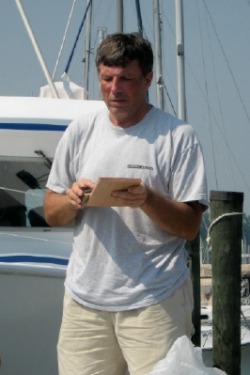
Dave managed to locate, order and receiver all the parts necessary to replace the water strainer, but he would need a bigger board to mount the new strainer to the engine wall. With some help from son-in-law Troy’s table saw, he got a piece of oak cut to the right size, and then spent the next couple of days applying several coats of polyurethane to seal it.
Now he just needed to get enough time on the boat to actually install it.
Field Trips
So, we didn’t spend all of our time and energy on the boat. We managed to get to Emporia to help build a swing set with our son, Adam, and help take care of 9-week old little Troy for our daughter Bonnie and her husband, Troy. Dave also helped big Troy run some wires in his garage.
Additionally, we made it up to northern Virginia for doctors’ appointments, a meeting with our financial planner and trips to a couple of banks. This gave us the opportunity to visit with friends from the area. We spent the weekend enjoying the hospitality of our friend, Cookie, including a trip to the Udvar-Hazy Air and Space Center – the extension of the Smithsonian out near Dulles Airport.
Now he just needed to get enough time on the boat to actually install it.
Field Trips
So, we didn’t spend all of our time and energy on the boat. We managed to get to Emporia to help build a swing set with our son, Adam, and help take care of 9-week old little Troy for our daughter Bonnie and her husband, Troy. Dave also helped big Troy run some wires in his garage.
Additionally, we made it up to northern Virginia for doctors’ appointments, a meeting with our financial planner and trips to a couple of banks. This gave us the opportunity to visit with friends from the area. We spent the weekend enjoying the hospitality of our friend, Cookie, including a trip to the Udvar-Hazy Air and Space Center – the extension of the Smithsonian out near Dulles Airport.
We were thrilled to get a chance to take in a service at United Christian Parish, the church we attended while living in Reston. It wasn’t the best Sunday to see some of the youth we worked with while there (since graduation had just occurred), but it was good to see so many others from the congregation, including Billie who had recruited us to work with the youth several years ago.
The weekend was ending on a near perfect note – until Dave put the key in to the ignition for our return trip. Our car wouldn’t start. After repeated tries, we finally realized we were going to have to get it towed to the Chevy dealer where we’d bought it 5 years ago. Cookie graciously agreed to take us in for yet another night and pick us and our stuff up from the parking lot where we the car died. The good news was that we enjoyed another day visiting our friend, and the repair was covered under warranty. (Thanks to Adam for keeping the receipt from the same repair done this spring.) If it had to go wrong, this was probably the best time for it to happen.
More Road Trips Ahead
We have trips to New York and North Carolina in our near future, so we won’t be spending too much time on the boat in the next couple of weeks, but we will probably find time to get a few more projects done in the time we have. We’ll keep you posted.
We have trips to New York and North Carolina in our near future, so we won’t be spending too much time on the boat in the next couple of weeks, but we will probably find time to get a few more projects done in the time we have. We’ll keep you posted.
